As any savvy marketer knows, the social media landscape is constantly changing. The paid media tactics you used in previous years may not generate the same level of leads and conversions today.
That’s why it’s important to keep up with new tactics and trends.
In this post, we’ll go through the top social media advertising trends that are expected to rise in popularity in 2024 – and that you should consider adding to your social advertising strategy.
Key Highlights on Social Media Advertising Trends
- Brand authenticity remains essential, with consumers increasingly favoring authentic, personal brand images.
- Ad-free subscription models are gaining traction, allowing brands to refocus on organic engagement and influencer marketing.
- Ephemeral content (e.g., Stories) drives engagement through short-lived, exclusive posts.
- Generative AI is revolutionizing ad creation with hyper-targeted, scalable content.
- Growth in AR and VR ads offers immersive experiences for brand engagement.
- Social commerce on platforms like Instagram allows direct in-app purchases, merging social and shopping experiences effectively.
Identifying Your Brand’s Key Social Media Platforms
Social media advertising is essential to any digital strategy, but the first step to leveraging the power of this ad opportunity is to know: Which social media platforms should I focus on?
Trying to advertise on all platforms will just spread your resources too thin. Plus, it’s doubtful that your audience is actively hanging out on every single platform. Knowing which ones to focus on will ensure that you’re putting your ad dollars toward the most popular channels.
TikTok
With 1 billion monthly active users, TikTok looks set to remain one of the biggest social media trends of 2024, particularly among younger audiences:

As 2024 gets underway, TikTok will serve as an essential tool for brands looking to connect with Gen-Z audiences through bite-sized videos that showcase their creativity and capacity for short-form storytelling.
TikTok is also set to be more prominent in the world of social commerce, making features such as the popular #TikTokMadeMeBuyIt hashtag and TikTok Live Shopping key components of your social media advertising toolkit:
Dive Deeper: TikTok Marketing: How to Get Started with Ads on This Platform
Instagram’s popularity shows no signs of slowing down, with the increasing emphasis on Instagram Reels (short, 90-second video clips) and Instagram Reels ads, helping the Meta-owned app maintain a stronghold on the world of social advertising.
As reels continue to dominate users’ feeds throughout 2024, brands should be looking to capitalize on the trend to showcase products and services with creative captivating short-form video.
For Gen Z, Instagram is the top social commerce platform, and with 35% of Instagram users making purchases on this platform, expect to see more companies using their Instagram video ads to increase engagement.
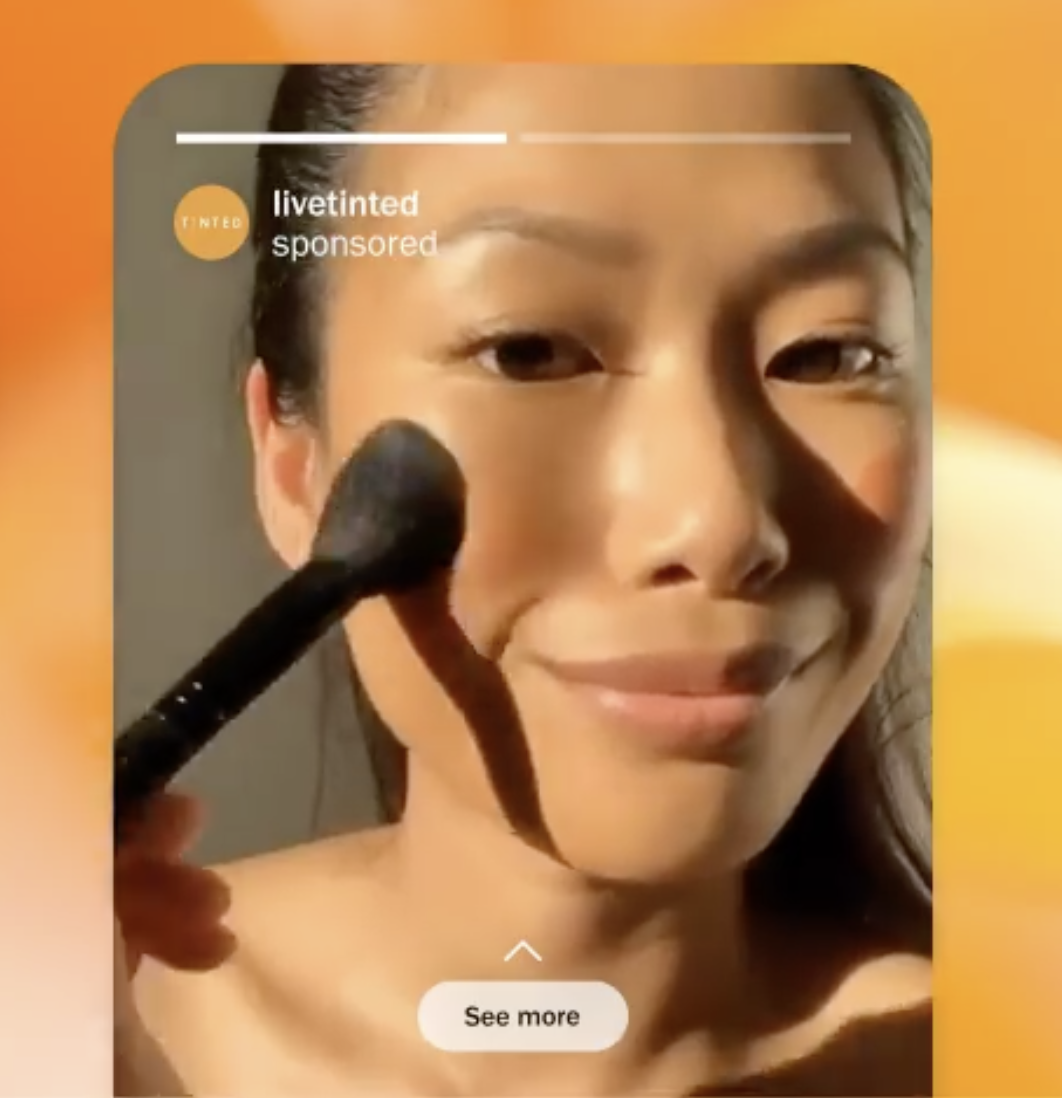
Dive Deeper: Understanding the Instagram Algorithm: A Marketer’s Take
Expect LinkedIn to retain its reputation as the perfect social media platform for B2B advertising in reaching the platform’s 774 million global users.
The only difference you’re likely to see is a shift in the kind of B2B content that performs best on the platform. No longer a place for generic, impersonal advertising, LinkedIn’s users are becoming increasingly drawn to authentic, personal stories and valuable, informative content.
Case studies, useful resources such as the one featured in the Cision ad, and visual content which helps audiences connect with the humans behind your brand will serve LinkedIn advertisers well:

Dive Deeper: LinkedIn Ads for Enterprise B2B SaaS: The Only Guide You’ll Need
Twitch
As a platform best known as a gaming streaming hub, it may not come as a tremendous shock to learn that males aged 18-34 make up a significant percentage of Twitch’s user base.
Companies looking to reach this demographic would do well to consider one of the latest trends in social media marketing: AR and VR ads. Virtual reality ads are a form of advertisement that uses immersive technologies to offer a real-world experience of the products or services, like this fully immersive “in-store” shopping experience from Walmart:
Although Twitch doesn’t currently offer VR or AR ads, it has partnered with Meta to test a new ad format that allows brands to place their ads in the metaverse, so keep an eye on this one.
Elsewhere, this popular live streaming site presents an ideal opportunity for investment in influencer marketing through collaborations, sponsored content and partnerships with key influencers.
X (Formerly Twitter)
To say the platform once known as Twitter had a controversial 2023 would be an understatement. Still, the fact remains that despite the turbulence, X boasts close to 550 million active monthly users.
One trend to keep an eye on in the coming year is the number of brands opting into the platform’s paid-subscription service, X Premium. Among other benefits, paid users see their posts and replies boosted over free users. Although it’s too early to tell how this will pay off, expect to see more brands experiment with X Premium as an alternative to traditional advertising on the platform.
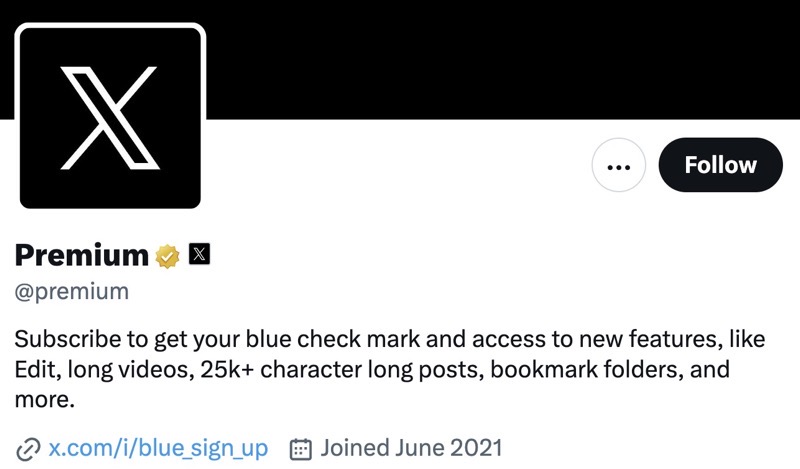
As for the type of companies this platform is best suited for, finance, income generation, cryptocurrencies, and entrepreneurialism are among the most talked-about subjects on X, making it a top choice for marketing your NFTs or other crypto-based projects.
Dive Deeper: 7 Twitter Advertising Benefits
Facebook remains the biggest social media platform in the world with 2.9 billion worldwide users.
While the advanced targeting options which allow users to create hyper personalized ad experiences will remain crucial to your success in the coming year, it’s also important to note the growing prominence of short-form video on the platform.
Of the multiple ad formats offered by Facebook, high-quality Facebook reels will no doubt produce strong results for advertisers throughout the coming year. Other successful ad formats on Facebook include image and video ads, carousel ads, collection ads, and instant experiences:
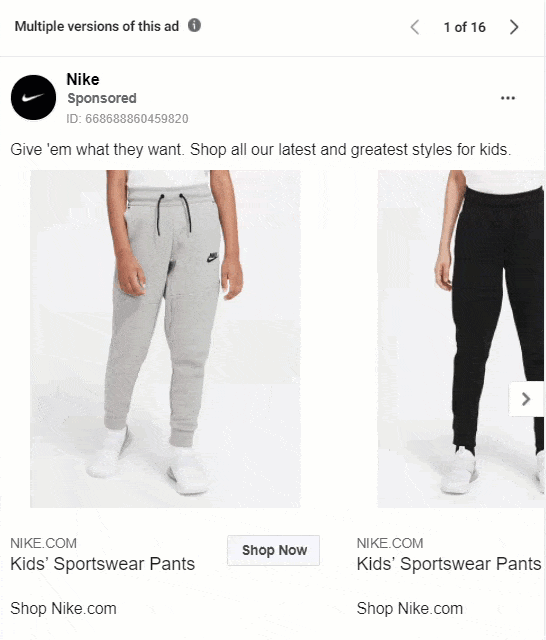
Pinterest may not court the same kind of attention that the likes of TikTok gets these days, but it remains a key player in the world of social media advertising.
Promoted Pins are Pinterest’s ad platform, and they can help you expand your reach very, very quickly. Plus, for every $1 spent on Promoted Pin campaigns, the result was $2 in profit:
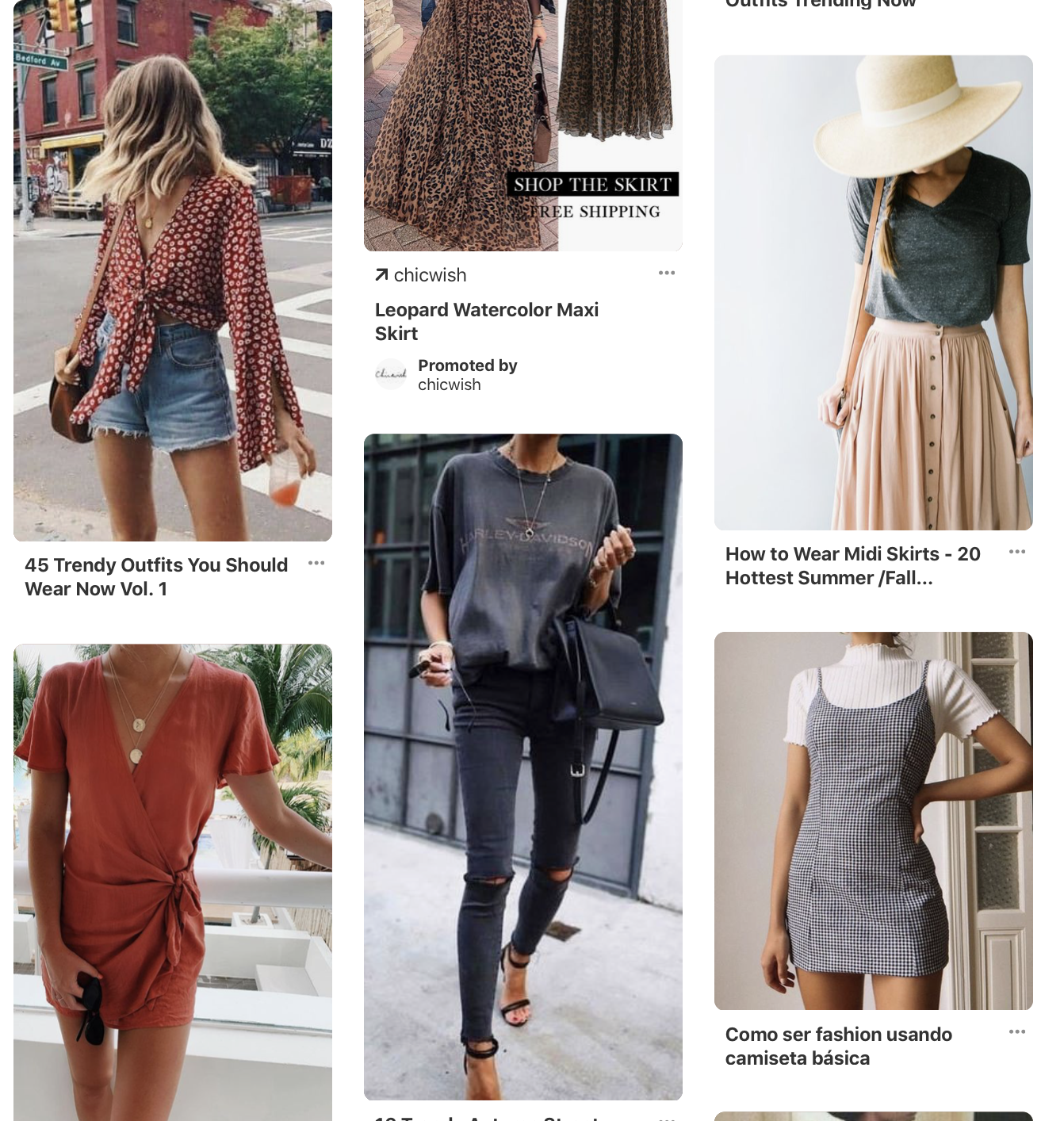
Shopping pins and integrations with online store platforms like Shopify make it an ideal advertising platform for e-commerce businesses, especially those in the fashion, home, and wellbeing industries. And keep in mind that 79.5% of users on Pinterest are women (although the male demographic is growing).
Businesses in those markets can benefit by taking advantage of Pinterest’s advanced analytics and user-targeting options to create personalized campaigns with powerful visual appeal.
Clubhouse
Clubhouse underwent a big reinvention in 2023. After pioneering the kind of live audio rooms that have since become a staple of social media (X’s Spaces for one), the app has now pivoted to a focus on “chats,” which are something akin to a cross between a group text message and group Instagram stories.
While the one-to-many live broadcasting options still exist, the newly revamped Clubhouse focuses much more on quality rather than quantity when it comes to a user’s connections, or what it refers to as “depth over reach“:
This will present new challenges for social media marketers in 2024. While there’s still an opportunity to partner with micro influencers who already have an established following on the platform, brands may also want to consider how they can use chats to expand their conversational marketing efforts.
Over half the users on Clubhouse are 18-34 years old and 42% are 35-54 years old. Brands should focus on hosting discussions, AMAs (Ask Me Anything) or other similar type of events.
Snapchat/Facebook Messenger/WhatsApp
Snapchat and Meta’s two messaging apps, WhatsApp and Facebook Messenger, have emerged as vital tools for brands, playing a key role in one of the latest social media trends, conversational marketing.
Conversational marketing is a strategy that fosters direct one-to-one interaction between brands and consumers, and this can be a great way to create more personalized, immediate and human-centric experiences for your customers.
Given that hyper-personalization and direct interaction are becoming ever more essential in the world of digital advertising, the coming year will undoubtedly see more brands using Messenger and WhatsApp to nurture leads and sales through meaningful, one-to-one interactions:

12 Social Media Advertising Trends to Drive More Conversions
Are you ready to discover the latest trends impacting the future of social media advertising? Advertisers should know which tactics to continue investing in and the new ones to focus on.
And if you’d rather a trusted social media and PPC agency manage your paid ads on social, the team at Single Grain is here to help. We’ve helped countless brands raise their ad revenue standards through paid social channels, and we can do it for your brand as well.
With that said, let’s get into our list of 12 social media advertising trends to look out for in 2024 (and into 2025).
Trend #1: Brand Authenticity
One past trend that isn’t fading is brand authenticity:
86% of consumers prefer when a brand has its own authentic image.
Consumers also want brands to develop connections:
59% of consumers feel brands have lost touch with the human side of the customer experience.
There are also big payoffs for companies that display themselves as a trustworthy business: 44% of consumers worldwide spend at least $500 per year towards the brands they trust.
How can brands convey this in their advertising? Create ads that tap into the human experience. This means using personalized messages from the CEO or other leaders from the brand, non-scripted interviews, and natural customer testimonials are excellent examples.
Plus, creating these ads doesn’t have to be as complex as you may think. Take this ad from Semrush as an example; it features a simple quote from a client that resonates with other small business owners and their image against a pink background:

Trend #2: Ad-Free Paid Subscription Models
Prioritized posts aren’t the only benefit of X’s new Premium subscription model. Paid users also get to enjoy an ad-free user experience, something which we’re going to see much more of across the social media spectrum in the coming year:

The likes of Snapchat and Reddit already offer ad-free versions for paying users:

And Meta and TikTok are also experimenting with paid subscriptions that let users opt out of ads.
Although these models are being rolled out in Europe first, it won’t be long before they’re available in other markets, too. This means that, as the new year begins, brands would be wise to:
Consider how to generate ROI on social media without relying solely on paid advertising.
Influencer marketing, organic content and brand development should all play an important role in your strategy over the coming year.
Trend #3: Ephemeral Content
Ephemeral content—like Instagram and Facebook Stories—plays on the excitement of exclusive, short-lived posts. Since these usually only last for 24 hours, they’re perfect for grabbing attention and getting people to act fast.
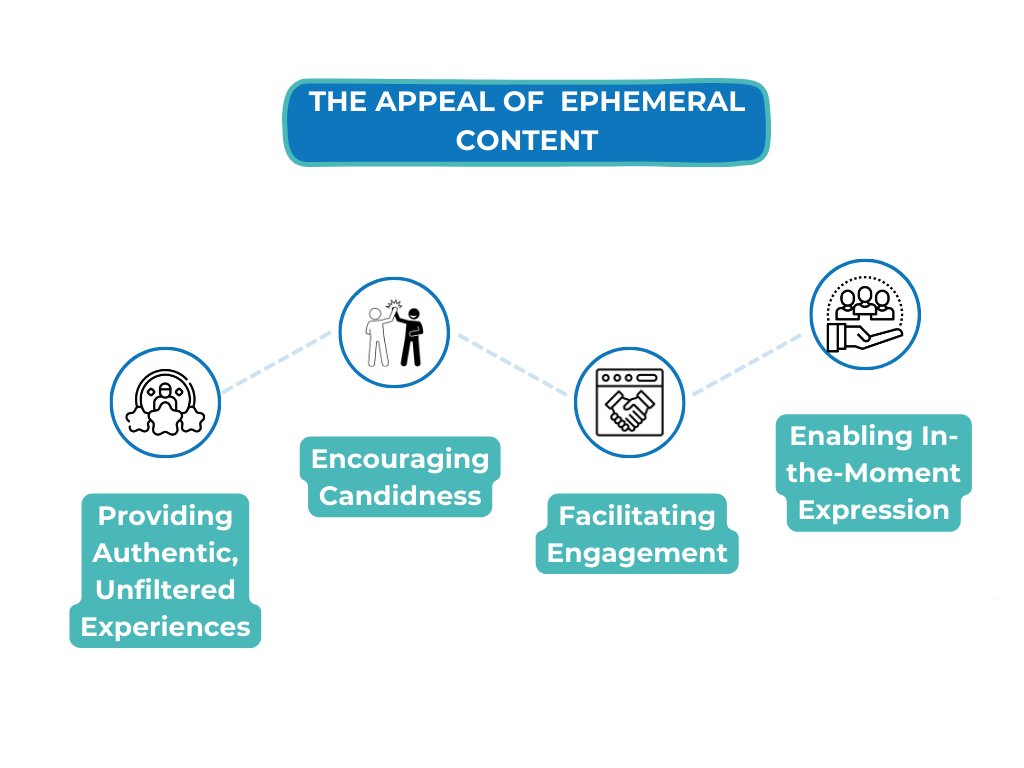
Image Source: Reposition
The fact that they’re here today and gone tomorrow makes people more likely to engage right away, which is great for things like flash sales, limited-time offers, or sneak peeks at upcoming products.
Brands are seeing great results by using Stories for time-sensitive promotions, like one-day sales or countdowns to a big launch. Plus, giving followers a behind-the-scenes look at your brand helps build a stronger connection with your audience, making your content feel more genuine and personal.
Trend #4: The Rise and Rise of Generative AI
Nothing captured the public imagination this past year quite like the rise of Artificial Intelligence and tools such as ChatGPT.
Now that we’re all used to the fact that AI is here to stay, it’s going to become one of the fastest growing trends in social media advertising.
Generative AI will be used more and more in everything from identifying top social media trends in order to capitalize on it, to improving the content creation process, to generating personalized ad copy and visuals for different audiences.
As video retains its stronghold over the advertising space, tools like Hour One’s AI video generator will prove invaluable for helping marketers create personalized content at scale:

And before you even get to that stage, AI is only going to get better at understanding your audience’s user behavior and preferences, making it easy to target ads with pinpoint precision.
Dive Deeper: The Drawbacks of Using Too Much AI in Marketing
Trend #5: More Advertisers Using AR and VR Ads
Augmented Reality and Virtual Reality are still in their relative infancy as advertising tools.
Still, as these technologies become more and more accessible, it only makes sense that they’ll be used by increasing numbers of advertisers to create more engaging and immersive advertising experiences.
With Meta’s AR ads, for example, beauty brands can allow users to “try on” make-up and homeowners can see how a company’s products might look around their home:

As these technologies continue to develop, now is the perfect time for companies to explore how AR and VR advertising can be worked into their own strategy:
- A fashion brand creating ads that allow users to try on clothes virtually
- A car manufacturer offering virtual test drives as part of an immersive ad experience
- Travel and leisure brands giving users the opportunity to experience their dream vacation before they book it.
Trend #6: Search Advertising on Social Media Trend
More people are getting off Google.
A growing number of social media users prefer going straight to platforms like YouTube and TikTok for their content needs. For example, a quarter of American adults get their news on YouTube.
And Gen Z has turned to TikTok for their search needs such as finding new information. Because of this, the short-form video platform has improved its search functionality to recognize more keywords and hashtags. TikTok has released new search ad features where businesses can bid on keywords and phrases.
So how can brands use search advertising on social media? Take a look at Pinterest as an example. A simple search for “dresses” shows both organic and ad listings, with paid results displaying a “Promoted” tag:

Many social media platforms are still developing these capabilities. Instagram offers search ads so users can have a better experience finding new products, businesses and content:

Businesses can also post ads on the Explore tab.
Trend #7: Livestream Shopping
Trend #8: Continued Growth in Conversational Advertising
When talking about social media trends, you can’t forget direct messaging (DM), such as Facebook Messenger (the 7th largest social platform) and WhatsApp (the most popular messaging platform).
Since so many users are on these apps, they are an effective advertising medium. Keep in mind that messenger ads can be intrusive if not created well. For best results, create ads that inspire meaningful interaction.
Absolut did this with a free drink ad. Users can reach out to the Absolut bot, which will direct them to a nearby bar. From here, the user can pick out the drink they want:

Trend #9: Widespread Adoption of Social Commerce Tools
Social e-commerce is growing three times as fast as traditional e-commerce. People enjoy the convenience of browsing a brand’s social media channels and buying products directly on the platform.
Instagram Shopping is the leading social commerce platform that brands should advertise on: Almost half of IG users say they use Instagram to shop on a weekly basis. Brands can create shoppable ad posts or boost existing shoppable posts as an ad. For users to better find your ads, include product tags in your post. This Sephora ad is a great example.

They’re promoting their body care line and include a Shop Now link.
Trend #10: Short-Form Video Ads
Short-form video is a newer trend that isn’t slowing down: 73% of consumers prefer learning about a product or service by watching a short video, making this advertising medium an excellent investment.
Look what you can do in just 10 seconds:
@avon_uk Something ULTRA exciting is coming tomorrow… 👀#avonultracolour #newproduct #newproductalert #teaser ♬ original sound – Avon UK
Why are short-form videos so popular? This goes back to the easy-to-enjoy and browse nature of TikTok. They allow users to access entertainment or information without committing to a full-length video.
According to Influencer Marketing Hub, short-form videos produce the highest ROI and engagements, and they’re the best format for lead generation. Short-form videos are especially popular among the younger generation, preferring videos less than one minute long.
Sans Forgetica is a great example of an educational video ad. In only 45 seconds, users understand the importance of typeface and memory and how Sans Forgetica merges both principles.
Trend #11: User-Generated Content
User-generated content is another trend that will continue to be at the forefront.
The success of UGC stems from the brand authenticity point we mentioned earlier – customers want to build a relationship with brands. They will engage with their social media channels to strengthen that bond. Posting UGC establishes social media proof, which fosters brand loyalty among users.
Because of this, some brands dedicate all or most of their ads toward UGC. In other words, the user-generated content is the ad for the brand (free, too!).
Loews Hotels is one of these brands. Instead of using models or professional photos, they use photos and videos taken by hotel guests in their social media strategy:

To find the photos, Loews has users include the hashtag #TravelForReal.
Trend #12: Nano-Influencers and Micro-Influencers
The days of paying a celebrity millions to post a picture are over. These days, businesses are seeking help from micro-influencers and even nano-influencers for their advertising efforts:
- Micro-influencers have 10,000-100,000 followers.
- Nano-influencers have 1,000-10,000 followers.
There are many reasons why the industry prefers these alternative influencer marketing strategies. Even though celebrities have a massive social media presence, they charge hefty fees for their influencer services. Kylie Jenner, for example, charges $1.8M for a post.
But there are other reasons to work with micro and nano-influencers, too. The UGC they post is more authentic and they’re more willing to work with smaller brands.
Companies will also experience some serious benefits when working with these influencers (on Instagram, at least):
- Nano-influencers have the highest engagement rates
- Micro-influencers generate a close second with an average engagement rate of 3.86%
- While mega-influencers see only 1.21% engagement rate
Learn More: Influencer Marketing Strategy: The Ultimate Guide to Growing Your Business with Brand Partnerships
Add These Social Media Advertising Trends to Your Campaign
There are many social media advertising trends to follow throughout the rest of 2023 and into the future.
Use specific forms of content, such as UGC, short-form videos, and audio, where it is most relevant. Invest your ad dollars toward popular platforms, such as TikTok, Instagram, and Twitch.
Focus on innovation, such as social media search advertising, social commerce, and AI. At the same time, don’t forget the power of brand authenticity and trust.
While these are social advertising best practices, you should only use the trending tactics that will result in conversions. Every business has a different audience, so always put your social media users first before creating an ad campaign.
If you’re ready to level up your social media presence with ads, Single Grain’s social advertising experts can help!👇
Social Media Advertising Trends FAQs
-
What is the trend in advertising in 2024?
-
What will social media look like in 2024?
Social media in 2024 is expected to evolve significantly, becoming more integrated, interactive and personalized, thanks to technological advancements and changing user expectations. These developments are likely to create a more interactive and user-centric social media landscape.
-
What is a likely trend for social media in the future?
A likely trend for social media in the future is the deepening integration of Augmented Reality (AR) and Virtual Reality (VR) technologies to provide more immersive and interactive user experiences. This trend reflects the ongoing evolution of social media platforms to engage users in novel and compelling ways:
- Enhanced User Engagement: AR and VR technologies allow users to interact with digital content in more engaging and intuitive ways.
- Virtual Social Spaces: VR can create virtual social spaces where users can interact with each other in a more lifelike manner.
- Immersive Advertising: AR and VR provide new avenues for advertising. Brands could create immersive ads that allow users to virtually try on products, explore 3D models or experience interactive narratives.
- Enhanced Shopping Experiences: These technologies will significantly enhance online shopping experiences on social media platforms.
- Educational and Informative Content: AR overlays can provide additional information about real-world objects, while VR can offer immersive educational experiences.
- Content Creation and Sharing: The integration of AR and VR technologies can provide users with new tools and platforms for creating and sharing content. This includes creating 3D models, virtual reality videos, and interactive digital experiences.
-
What is the most popular social media advertising?
The popularity of social media advertising platforms can vary based on the target audience, industry and marketing goals. However, certain platforms are widely recognized for their advertising capabilities due to their extensive user bases and advanced ad targeting options. The most popular social media advertising platforms are those we listed at the top of this article.
Each of these platforms has its own set of strengths and can be effective depending on the advertising campaign’s objectives and target audience. Advertisers often use a mix of these platforms to achieve their marketing goals, and the right mix can vary significantly from one brand to another.







